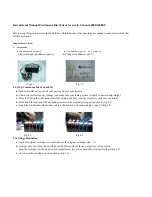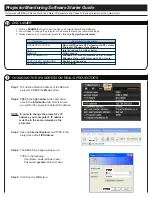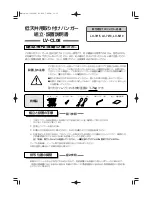
8 |
P a g e
In order to use the lock nuts, first install the lock nut to the tire valve (with the
bump facing tire rim). Screw in all the way down and ensure that there is still a
minimum of 5 thread count
on the tire valve to make way for the sensor unit.
Next, screw in the sensor unit until it is reasonably tight. Then use your finger to
unscrew the lock nut upwards (i.e. anti-clockwise) until it pushes against the
bottom of the sensor unit. Use the wrench to tighten the lock nut. The resultant
friction force will make it difficult to remove the sensor unit without loosening the
lock nut. For rubber valves, hold the sensor unit with one hand and tighten the lock
nut with the wrench on another hand. This to avoid the rubber valve from twisting
making it unable to tighten the lock nut.
WARNING: Do not apply too much force to tighten the lock-nut. You may
face difficulty to loosen the lock nut later on especially for rubber valves that
typically doesn’t stay firm on the tire rims.
NOTE: If your tire valve is too short, you shouldn’t use the lock nut as this
will block the sensors to be completely screwed over the tire valve and causes
air leak. Our sensors are designed to work on a tire valve with a minimum of 5
thread counts.
Use the key chain provided to keep the wrench together with your bike keys, so that
you don’t have to worry about misplaced wrench when you need to remove the
sensors when refilling air to your tires.









































